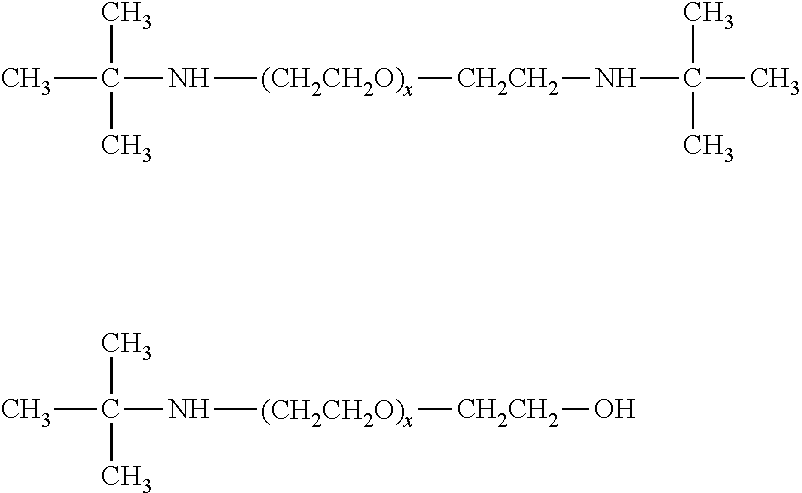Amine gas treatment solutions
a technology of amine gas treatment and solution, applied in the field of acidic gas absorption, can solve the problems of foam generation, reduced unit effective rating, and practical problems
- Summary
- Abstract
- Description
- Claims
- Application Information
AI Technical Summary
Benefits of technology
Problems solved by technology
Method used
Image
Examples
Embodiment Construction
Selective Absorption Process
[0010]The selective absorption of the acidic gases from the gas mixture or stream is typically carried out by contacting the gaseous stream with the absorbent solution in any suitable contacting vessel. In such processes, the normally gaseous mixture from which the acid gases are to be selectively removed may be brought into intimate contact with the absorbent solution using conventional equipment such as a tower or vessel packed with, for example, rings or with sieve plates, or a bubble reactor.
[0011]Typically, the absorption is conducted by feeding the normally gaseous mixture at the lower end of the absorption tower while fresh absorbent solution is fed into the upper region of the tower. The gaseous mixture, freed largely from the acidic components, emerges from the upper portion of the tower, and the loaded absorbent solution, containing the absorbed gases, leaves the tower near or at its bottom. The inlet temperature of the absorbent solution during...
PUM
| Property | Measurement | Unit |
|---|---|---|
| temperature | aaaaa | aaaaa |
| temperature | aaaaa | aaaaa |
| temperature | aaaaa | aaaaa |
Abstract
Description
Claims
Application Information
 Login to View More
Login to View More - R&D
- Intellectual Property
- Life Sciences
- Materials
- Tech Scout
- Unparalleled Data Quality
- Higher Quality Content
- 60% Fewer Hallucinations
Browse by: Latest US Patents, China's latest patents, Technical Efficacy Thesaurus, Application Domain, Technology Topic, Popular Technical Reports.
© 2025 PatSnap. All rights reserved.Legal|Privacy policy|Modern Slavery Act Transparency Statement|Sitemap|About US| Contact US: help@patsnap.com



